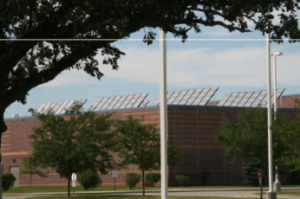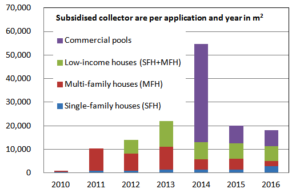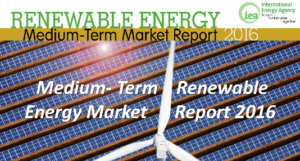USA: “Growing the SWH market requires long-term support”
November 15, 2010
Lisa Frantzis
 Lisa Frantzis, Managing Director for Renewable and Distributed Energy at Navigant Consulting, has recently completed a study on the history, system types and supply chain of the solar thermal industry. She shared her findings with the participants of the Solar Thermal ’10, the second National Solar Heating and Cooling Conference, which took place in Milwaukee on 30 September and 1 October 2010. In her presentation, Frantzis analysed the US market and gave advice on how to develop a solar manufacturing sector in Milwaukee. The US state’s largest city , Wisconsin, is one of 25 solar cities, which receive funding from the US Department of Energy to promote the use of solar technology in their communities (see http://www.solarthermalworld.org/node/1419).
Lisa Frantzis, Managing Director for Renewable and Distributed Energy at Navigant Consulting, has recently completed a study on the history, system types and supply chain of the solar thermal industry. She shared her findings with the participants of the Solar Thermal ’10, the second National Solar Heating and Cooling Conference, which took place in Milwaukee on 30 September and 1 October 2010. In her presentation, Frantzis analysed the US market and gave advice on how to develop a solar manufacturing sector in Milwaukee. The US state’s largest city , Wisconsin, is one of 25 solar cities, which receive funding from the US Department of Energy to promote the use of solar technology in their communities (see http://www.solarthermalworld.org/node/1419).
Photo: Navigant Consulting
Since 1991, the US solar water heating market (including solar pool heating) has had a 6% compound annual growth rate (CAGR) (see attached presentation). According to Frantzis, the solar thermal market in the US is now growing rapidly. However, even with high growth, the market is expected to remain relatively small. Navigant estimates this year’s market volume at USD 800 million. Depending on an annual growth rate of 15 or 24 %, market value will increase to USD 2 or 3.8 million thereafter. “The US solar market is dominated by a few key states and is highly dependent on incentives, making it vulnerable to policy changes. Hawaii, for example, was the largest market in 2009, but recent policy changes will likely negatively impact its market growth,” Frantzis said about the current situation.
 In 2009, a small number of states dominated the solar water heating (SWH) market, which counted a total of 25,000 systems. 35% of all new domestic solar water heating systems in the US were installed in Hawaii. Six states continue to account for almost 70% of all domestic SWH systems.
In 2009, a small number of states dominated the solar water heating (SWH) market, which counted a total of 25,000 systems. 35% of all new domestic solar water heating systems in the US were installed in Hawaii. Six states continue to account for almost 70% of all domestic SWH systems.
Source: Navigant Consulting, Inc. based on interview with Les Nelson, SRCC, State Incentive Programs (CA, HI, FL)
Her advice: The USA should learn from the success in Europe. Growing the US market would require continued, long-term support of SWH incentives and other policies, public education campaigns, and performance-based incentives.
In her presentation, Frantzis analysed the following market trends:
- Increase in Commercial Systems: The number of larger commercial projects is expected to increase over the coming years. The American Recovery and Reinvestment Act (ARRA) funds are likely to affect the industry only short term, until the funds are depleted.
- Reduced Natural Gas Prices: Natural gas prices drive electricity prices. Current forecasts are not as high as several years ago as a result of shale gas usage.
- Reduced SWH System Prices: As the industry matures and manufacturing volume grows, prices are likely to decline.
- Stricter Incentive Reporting Requirements: More states may adopt strict incentive reporting requirements, similar to Hawaii and California, which may hinder market adoption by installers.
The second part of Frantzis’ presentation focused on Milwaukee’s ability to develop a solar manufacturing sector. The Managing Director summarised that the SWH market could be an attractive opportunity for Milwaukee manufacturers: “We recommend concentrating on producing high value components that customers are willing to pay a premium for, such as components that are currently being imported from Europe.”
- Assembly – Pump Station
- Collector Mounting/ Racking System
- Solar Thermal Collector Frame
- Drainback Tank
- SWH Water Storage Tank
- Expansion Tank
- Heat Exchanger for Portable Water
Collectors were not recommended due to their intricate design and high prices which allow them to be shipped from overseas with a reduced cost impact. Frantzis concluded: “The emerging US solar water heating component market is highly fragmented. It presents both opportunities for new players, but risks as well.”
More Information:
http://www.the-mrea.org
http://www.navigantconsulting.com


